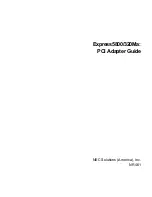
32
What is DBI?
The ability of the antenna to shape the signal and focus it in a particular direction is called Antenna
Gain, and is expressed in terms of how much stronger the signal in the desired direction is, compared
to the worst possible antenna, which distributes the signal evenly in all directions (an Isotropic Radia-
tor). To express the relationship to the Isotropic reference, this is abbreviated: "dBi". The typical
omni-directional "stick" antenna is rated at 6 -8 dBi, indicating that that by redirecting the signal that
would have gone straight up or down to the horizontal level, 4 times as much signal is available hor i-
zontally. A parabolic reflector design can easily achieve 24 dBi.
What is WEP?
Short for Wired Equivalent Privacy, WEP is a security protocol for wireless local area networks
(WLANs) defined in the 802.11b and 802.11a standards.
WEP is designed to provide the same level of security as that of a wired LAN. LANs are inherently
more secure than WLANs because LANs are somewhat protected by the physicalities of their stru c-
ture, ha ving some or all part of the network inside a building that can be protected from unauthorized
access. WLANs, which are over radio waves, do not have the same physical structure and therefore
are more vulnerable to tampering.
WEP aims to provide security by encrypting data over radio waves so that it is protected as it is
transmitted from one end point to another. The Wired Equivalent Privacy (WEP) feature uses the RC4
PRNG algorithm developed by RSA Data Security, Inc.
If your wireless access point supports MAC filtering, it is recommended that you use this feature in
addition to WEP (MAC filtering is much more secure than encryption).
Summary of Contents for 2512W-B FICHE
Page 1: ...SMC2512W B EU...
Page 6: ...5...





































